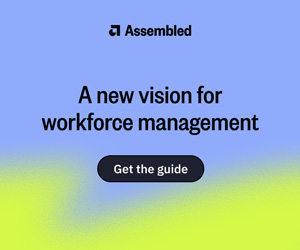As organizations around the world reconsider their real estate needs, and as video meetings continue to become a more ubiquitous part of our professional lives, we need to consider how pixel real estate will change our interpretation of presence in hybrid meetings.
Considering Presence and Inclusivity in Hybrid Work
During fully in-person meetings, everyone is given a seat at the table. This is part of how we ensure that everyone can be included in the discussion and can contribute on an equal playing field.
But in hybrid working, where some people attend meetings in-person while others join remotely, the playing field no longer exists solely within the physical meeting room; we must now consider avenues of inclusion for those who join remotely.
Technology Bridging the Hybrid Divide
Our recent Hybrid Ways of Working 2022 Global Report, which surveyed 2,800 knowledge workers in six key countries, found that 37% of employees say they often feel left out of the conversation in hybrid meetings.
However, those using only professional devices for work had less trouble hearing what’s being said than those using only consumer devices, where almost 4 in 10 reported audio issues.
Additionally, hybrid professional device users were 10% less likely than consumer device users to report feeling left out of the conversation.
Needless to say, employees see great value in creating inclusive hybrid environments by levelling the virtual playing field with professional technology.
Pixel Real Estate
One of the ways we’ve been thinking about inclusion in hybrid environments is through pixel real estate. Regardless of whether this meeting is fully virtual or hybrid, our ability to see each person equally effectively translates to our degree of presence in the meeting.
As we continue to integrate Unified Communications (UC) platforms such as Microsoft Teams and Zoom into our daily work activities, leaders and organisations will need to increase their focus on equal pixel real estate to offer inclusive and flexible work environments.
How Video Levels the Playing Field for Both In-Person and Remote Participants
For the most part, fully remote virtual meetings provide a relatively equal pixel real estate experience; everyone is joining from their individual video stream, so each is equally represented on screen.
But without the proper video technology for hybrid meetings, both remote and in-person participants can be at a disadvantage.
In fact, 70% of employees say that standardised professional video cameras would encourage everyone to participate equally in hybrid meetings. While, 61% percent of employees say they feel much more included and present in meetings when everyone attending has their camera turned on.
Aurangzeb Khan, SVP of Intelligent Vision Systems at Jabra, has been working with exactly this issue. “The reason many employees are advised to use their personal devices to join meetings,” he says, “is to ensure equitable pixel real estate.”
However, if you’re physically in a meeting room during a hybrid meeting, “you may have a disadvantage because you look smaller than other people, because there are multiple people within a field of view.”
This creates a subpar experience for everyone: remote participants strain to see their colleagues, and in-person participants aren’t equally represented in the virtual field.
To solve this, Aurangzeb Khan says that “the next generation collaboration experience now has meeting rooms with full video coverage, which have been individualized and presented in an equitable grid.”
With the right intelligent video solutions, cameras are now powerful enough to individualize streams and zoom in on each person present in a room and effectively present them on screen in the same way that remote participants are seen.
As we continue to navigate a hybrid future, leaders and IT decision makers will need to consider their video capabilities and how they can boost employee pixel real estate for a more equal and inclusive experience.
Author: Guest Author
Published On: 25th Aug 2022 - Last modified: 26th Aug 2022
Read more about - Guest Blogs, Jabra
















